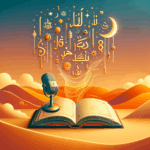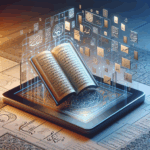The Arabic Alphabet and Its Role in Scientific Discoveries
Have you ever wondered how the Arabic alphabet contributed to scientific breakthroughs? 🌟 This ancient script not only laid the foundation for beautiful calligraphy but also played a pivotal role in shaping the world of science. Join me as we delve into the fascinating journey of the Arabic alphabet and its impact on scientific discoveries.
Table of Contents
1. Introduction to the Arabic Alphabet
2. The Golden Age of Science and the Arabic Script
3. Translating Knowledge: The Key to Progress
4. Legacy of the Arabic Alphabet in Modern Science
5. Conclusion
6. FAQs
Introduction to the Arabic Alphabet
The Arabic alphabet, with its elegant curves and flowing lines, is more than just a writing system. It consists of 28 letters and is written from right to left. Its origins can be traced back to the 4th century CE, evolving from the Nabataean script. But what makes it truly special is its influence on the world of science and knowledge. 📜
The Golden Age of Science and the Arabic Script
During the Islamic Golden Age, roughly from the 8th to the 14th century, the Arabic language and its alphabet became the lingua franca of science. Scholars from different parts of the world, irrespective of their native language, used Arabic to communicate their scientific findings. This period saw a remarkable surge in advancements across various fields such as mathematics, astronomy, medicine, and chemistry. 🔬
One iconic figure is Al-Khwarizmi, whose works in mathematics laid the groundwork for algebra (a term derived from the Arabic word „al-jabr“). The Arabic alphabet was the medium through which these revolutionary ideas were documented and shared. 🧮
Translating Knowledge: The Key to Progress
The Arabic script served as a bridge for knowledge transfer. Many Greek, Persian, and Indian scientific texts were translated into Arabic. This translation movement not only preserved ancient knowledge but also enhanced it through new interpretations and discoveries. The House of Wisdom in Baghdad stands as a testament to this era of intellectual collaboration and growth. 📚
By translating works from different cultures, Arabic scholars were able to create a comprehensive body of knowledge that fueled further research and innovation. This melting pot of ideas was crucial in paving the way for the European Renaissance. 🌍
Legacy of the Arabic Alphabet in Modern Science
Today, the legacy of the Arabic alphabet in science is undeniable. Many scientific terms and concepts have their roots in Arabic, and the script’s influence can be seen in various modern alphabets. The interdisciplinary approach of Arabic scholars continues to inspire scientists around the globe. 🌐
Moreover, the preservation of ancient texts through Arabic translations ensures that humanity’s collective knowledge is not lost to time, allowing future generations to build upon the discoveries of the past. 📖
Conclusion
The Arabic alphabet is more than a tool for communication; it’s a bridge connecting cultures and eras. Its role in scientific discoveries highlights the importance of preserving and sharing knowledge. As we continue to explore new frontiers, the spirit of the Arabic script reminds us of the power of collaboration and intellectual curiosity. ✨
FAQs
Q1: How did the Arabic alphabet facilitate scientific discoveries?
A1: The Arabic alphabet served as a universal medium for scholars during the Islamic Golden Age, allowing for the documentation and dissemination of scientific research across different regions and languages.
Q2: What role did translation play in the scientific advancements of the Arabic-speaking world?
A2: Translation was crucial as it enabled Arabic scholars to access, preserve, and build upon the scientific works of ancient Greek, Persian, and Indian cultures, leading to new discoveries and innovations.
Q3: Are there any modern scientific terms that originate from Arabic?
A3: Yes, many scientific terms, especially in mathematics and astronomy, have Arabic origins, such as „algebra“ and „algorithm,“ reflecting the significant contributions of Arabic scholars to these fields.






